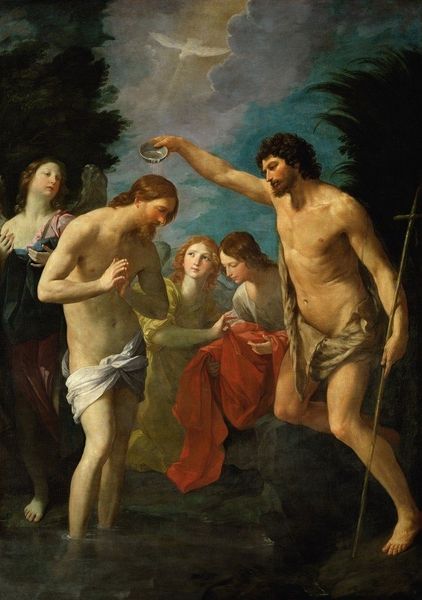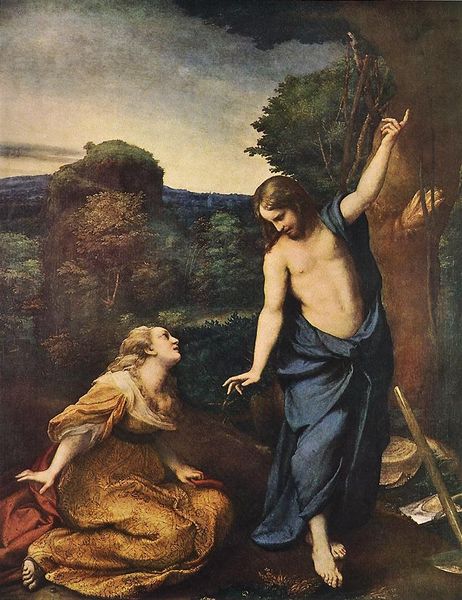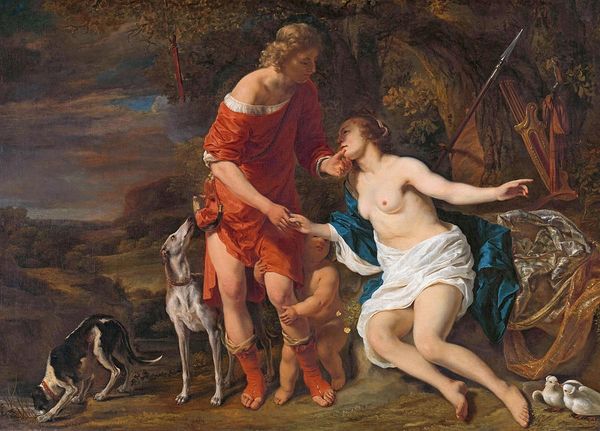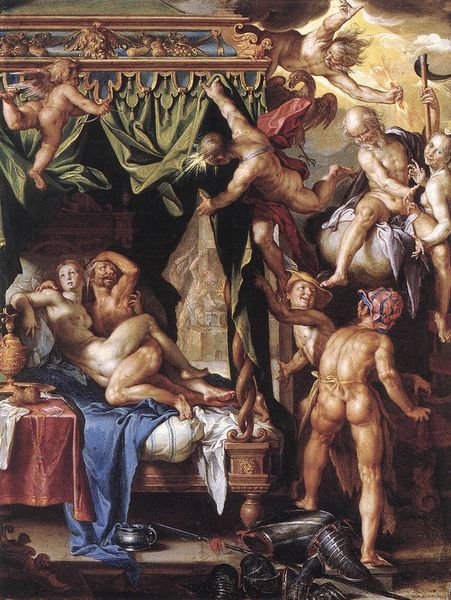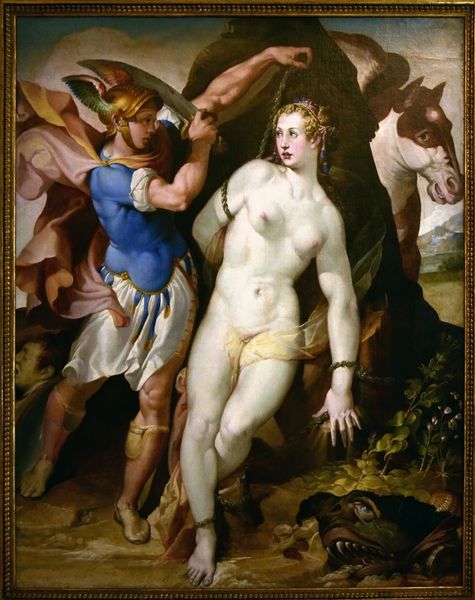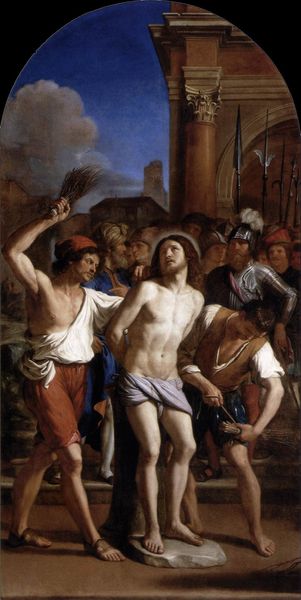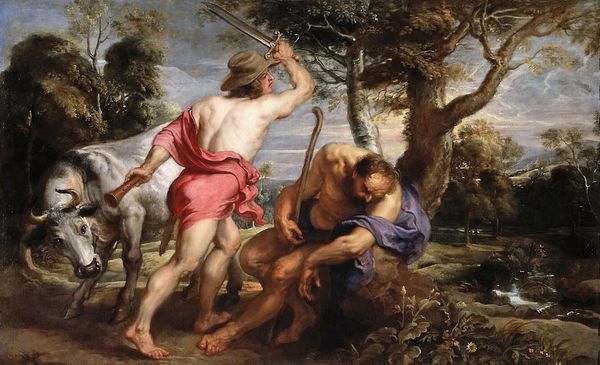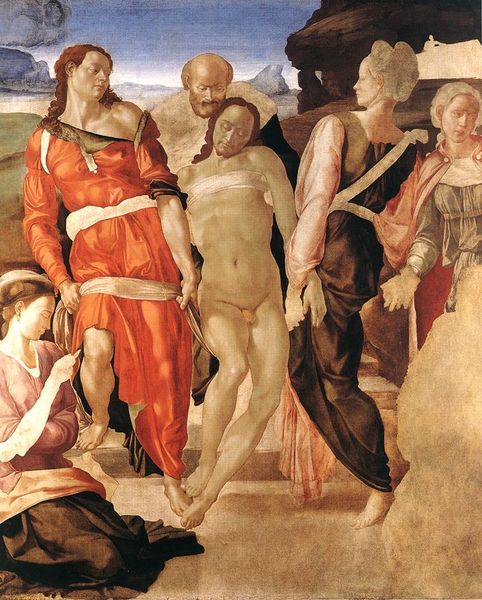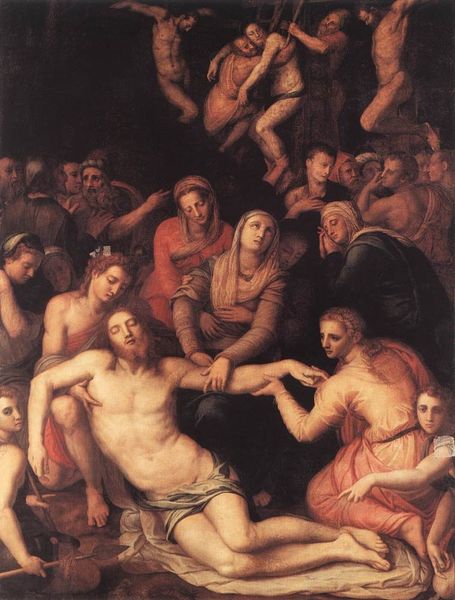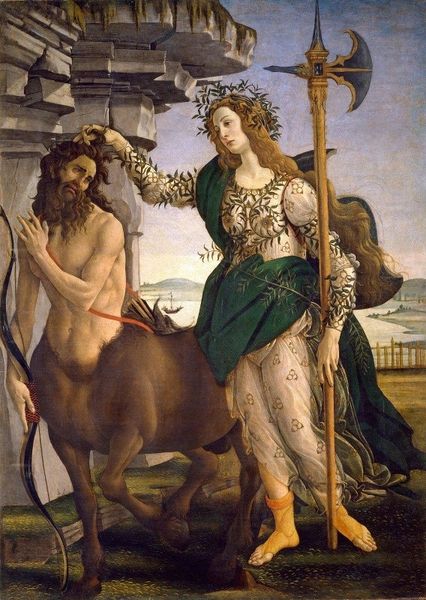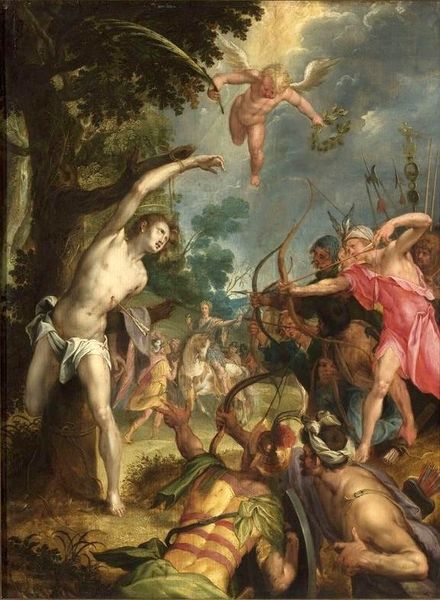
oil-paint
#
portrait
#
oil-paint
#
landscape
#
mannerism
#
figuration
#
oil painting
#
christianity
#
history-painting
#
italian-renaissance
Dimensions: 195 x 291 cm
Copyright: Public domain
Curator: Standing before us is Agnolo Bronzino's oil on panel masterpiece, "Noli me tangere," painted around 1561. Editor: My initial reaction is that the painting is quite cool and detached. There’s a formal quality, almost like a staged tableau vivant rather than a raw, emotional encounter. Curator: Precisely. The smooth surfaces and meticulously rendered forms are hallmarks of Bronzino’s Mannerist style. It's important to remember the production—these polished surfaces involve complex layering of pigments and glazes, painstaking work! Editor: True, and thinking about it within the broader religious context… Bronzino’s precise depiction seems almost calculated to instill a sense of awe, reaffirming social order by portraying biblical stories in a way that underscored established hierarchies. Mary Magdalene's social status and gender certainly impact her relationship with divinity in this context. Curator: Indeed, we see that attention to social cues reflected in the careful construction of clothing—a luxury item in this period and carefully thought through in a commission. It gives us a real sense of the patron's values and the symbolic power they held. Editor: I agree, but also consider this: Bronzino isn't just painting a biblical scene, but actively participating in a dialogue about the relationship between the divine and the human. It touches on so many key cultural intersections of the 16th century. Curator: Let's look at the other figures peeking out from the building—what labor was involved there? The support and composition seem deliberate, framing the main event. Editor: That placement reminds me how important visibility and recognition were for women in the art world at this time, since the labor within the community was certainly not always reflected at scale in social representation or remuneration. Curator: I appreciate how you’ve pulled in those socio-economic threads of influence here. By recognizing materials as signifiers and connecting religious art to manufacturing realities, our perspective can change meaningfully. Editor: Exactly. By approaching art from these varied angles, we enrich our grasp of the narrative at the center—historical, social, spiritual, or artistic. Curator: Bronzino's craftsmanship prompts an entirely fresh and comprehensive vision. Editor: Here, a broader look at religious and socioeconomic themes highlights this work with fresh perspective.
Comments
No comments
Be the first to comment and join the conversation on the ultimate creative platform.
